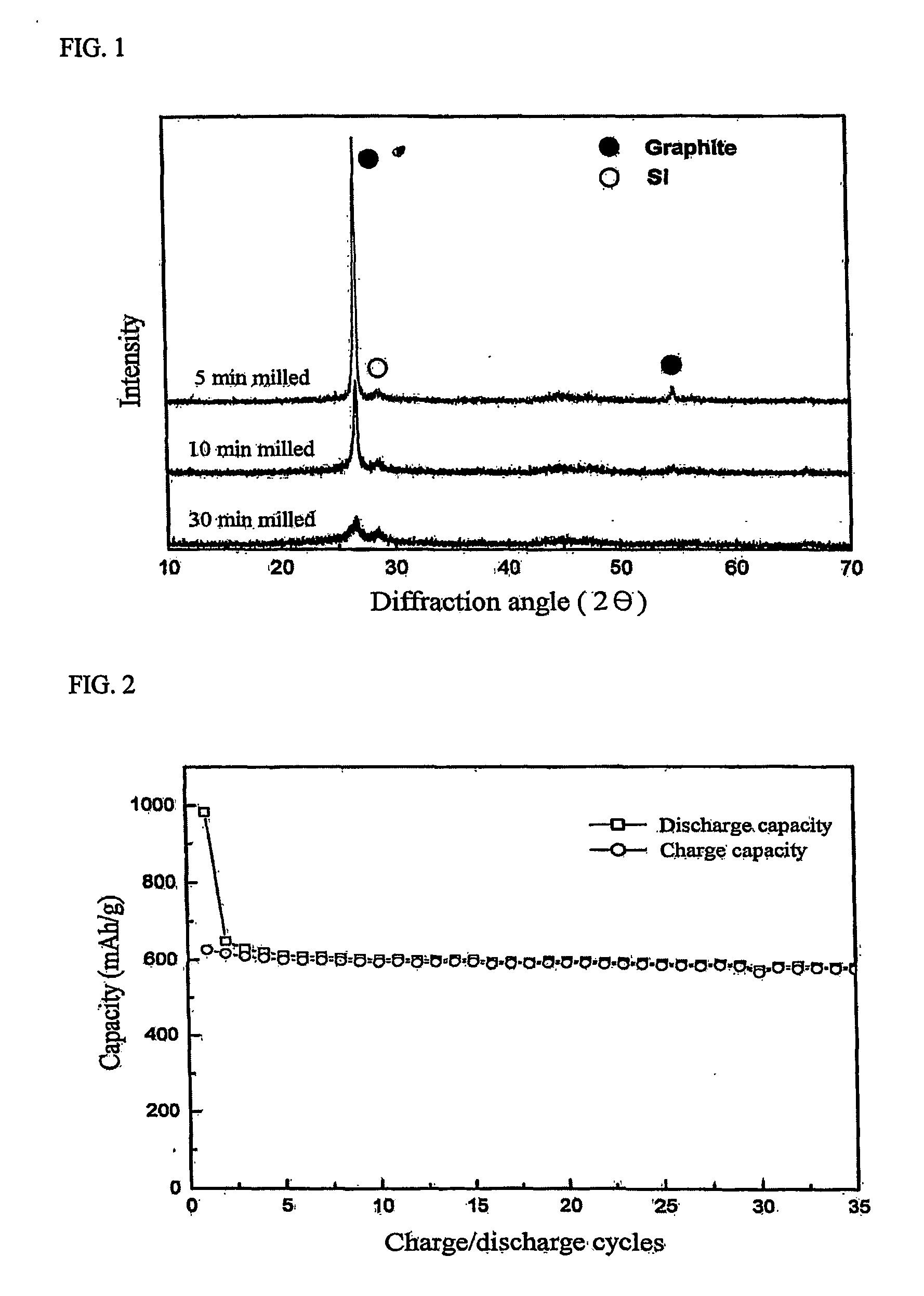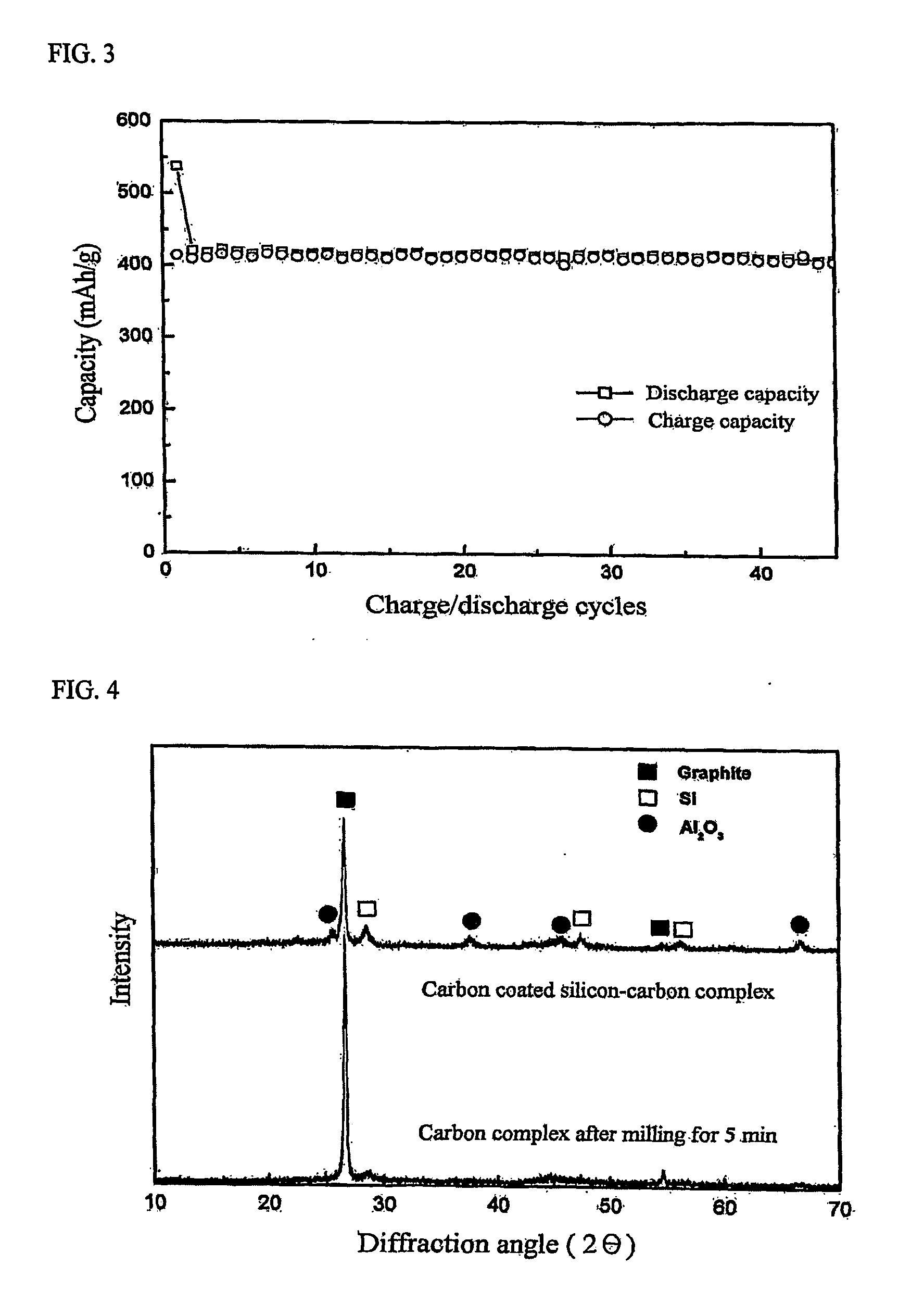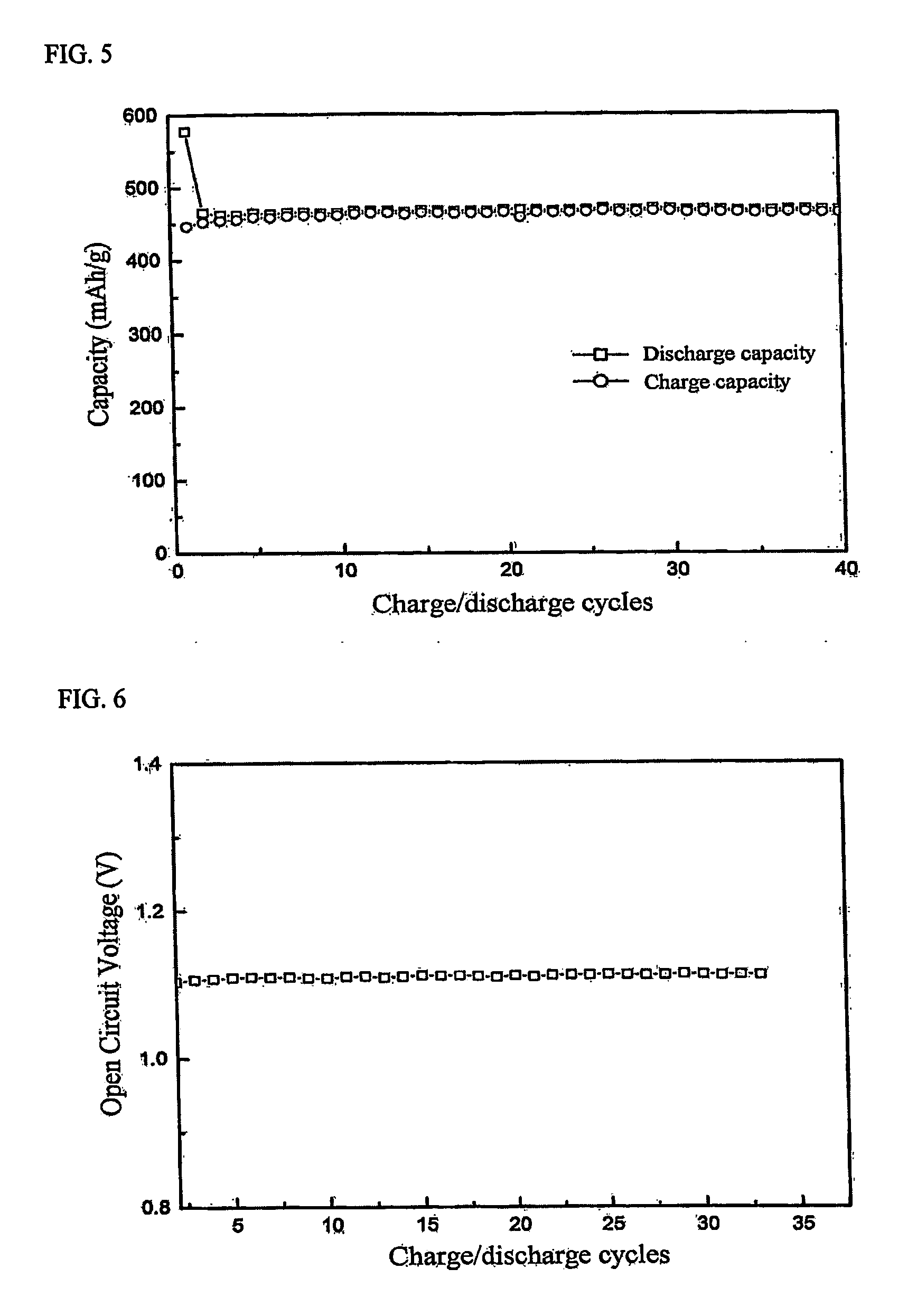Negative active material for lithium secondary battery and method for preparating same
a secondary battery and negative active material technology, applied in the manufacture process of electrodes, cell components, electrochemical generators, etc., can solve the problems of reducing the charge/discharge cycle life, and reducing the capacity of the battery, so as to improve the charge/discharge cycle life, and improve the charge/discharge capacity
- Summary
- Abstract
- Description
- Claims
- Application Information
AI Technical Summary
Benefits of technology
Problems solved by technology
Method used
Image
Examples
example 1
[0043] SiO, Al and Li2O2 were mixed in a molar ratio of 1:1:0.2, and ball milled to prepare the Al—Li—O oxide matrix surrounding Si of a nano size through a mechanical alloying reaction. This Si-containing oxide complex and carbon (SFG 44, graphite) were mixed in a weight ratio of 50:50, then ball milled to prepare a nano Si-containing oxide complex-graphite anode active material. FIG. 1 shows X-ray diffraction patterns of the anode active material in relation to a ball milling time (5, 10 and 30 min). As the milling time increased, the graphite showed changes in the structure thereof, but there were no such changes in the nano silicon complex. Further, when the crystallite grain size of Si was calculated using the Scherrer equation and the X-ray diffraction patterns, Si was found to have a nano-crystalline structure of 16.2 nm.
[0044] A charge / discharge capacity curve of the nano Si-containing oxide complex-graphite active material (10 min milling) with respect to charge / discharge ...
example 2
[0045] In order to coat with a low crystalline carbon material, the nano Si-containing oxide complex-graphite anode active material (10 min milled) prepared in Example 1 was mixed with a carbon precursor (coal tar pitch) which is carbonized through a melting process upon carbonizing, and heat treated at a temperature of 900° C. for 1 hour under argon atmosphere. The charge / discharge capacity of the anode material thus obtained, with respect to charge / discharge cycles, is shown in FIG. 3. FIG. 3 shows that the anode material had a capacity of about 420 mAh / g greater than the theoretical capacity of graphite (372 mAh / g), and an excellent charge / discharge cycle characteristics. Further, as can be seen in FIG. 3, the initial irreversible capacity significantly decreased as compared to the anode material of Example 1 in which the surface treatment by coating of the low crystalline carbon material was not done.
[0046] Therefore, coating with the low crystalline carbon material may not onl...
example 3
[0047] In order to coat with a low crystalline carbon material, the nano Si-containing oxide complex-graphite anode active material (5 min milled) prepared in Example 1 was mixed with a carbon precursor (coal tar pitch) and heat treated at a temperature of 900° C. for 1 hour under argon atmosphere. X-ray diffraction patterns of the anode material thus obtained, with respect to charge / discharge cycles, are shown in FIG. 4. It can be seen from the decreased graphite peaks that the surface of the complex was well coated with a low crystalline carbon layer. Despite the fact that the heat treatment temperature was 900° C., the peak of silicon or alumina (Al2O3) did not greatly increase and they were present in a nano-crystalline state. When a crystallite grain size of Si was calculated using the Scherrer equation and the X-ray diffraction patterns, Si was found to have a nano-crystalline structure of 14.8 nm. This result is similar to the X-ray diffraction patterns (FIG. 1) of Example 1 ...
PUM
 Login to View More
Login to View More Abstract
Description
Claims
Application Information
 Login to View More
Login to View More - R&D
- Intellectual Property
- Life Sciences
- Materials
- Tech Scout
- Unparalleled Data Quality
- Higher Quality Content
- 60% Fewer Hallucinations
Browse by: Latest US Patents, China's latest patents, Technical Efficacy Thesaurus, Application Domain, Technology Topic, Popular Technical Reports.
© 2025 PatSnap. All rights reserved.Legal|Privacy policy|Modern Slavery Act Transparency Statement|Sitemap|About US| Contact US: help@patsnap.com



